The Difference Between a Water Filter and a Water Purifier
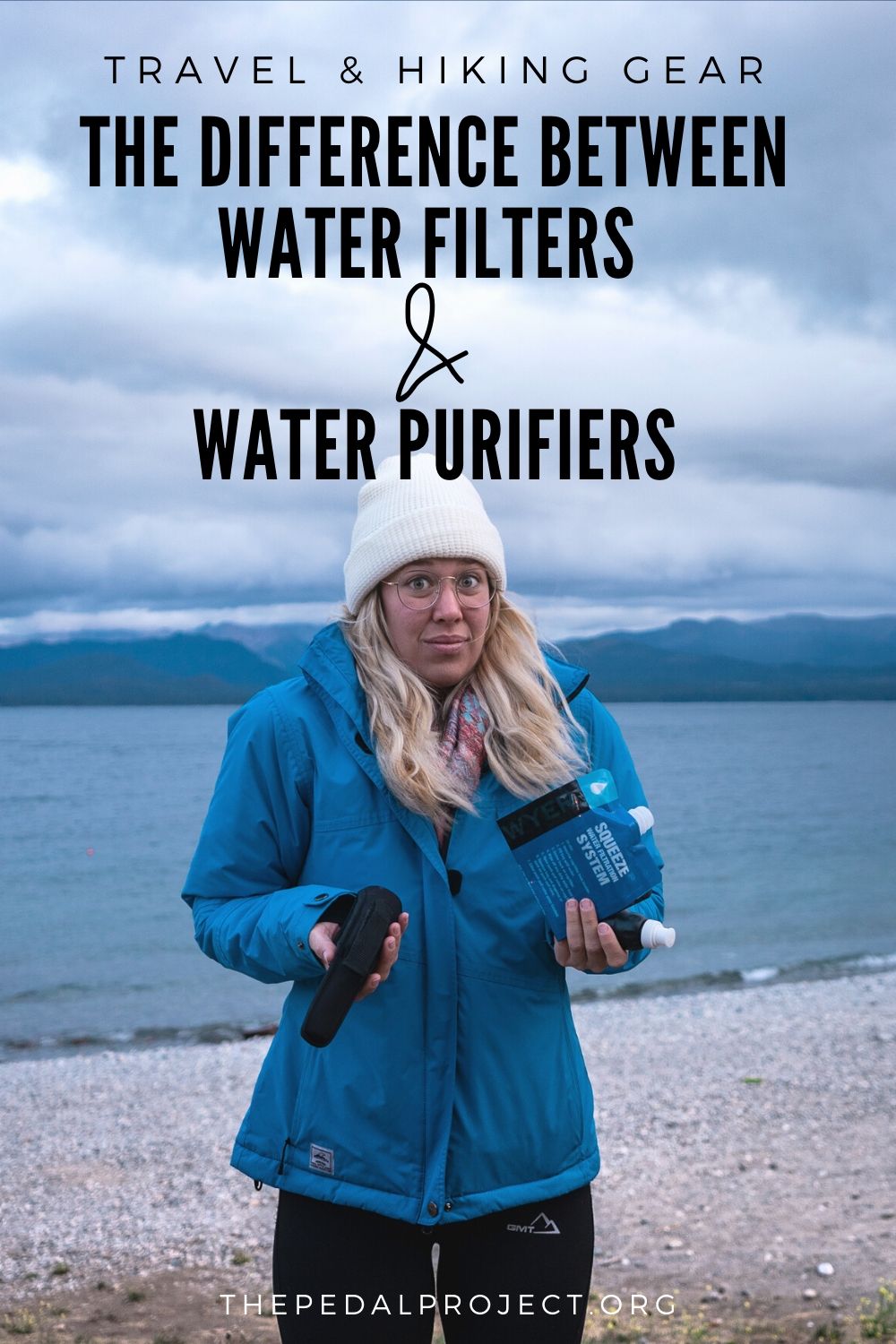
A while back, I asked all of you on Instagram if you knew the difference between a travel water filter and a travel water purifier. It seems you all were pretty divided – almost 50/50 – and that’s fair. Because, to be honest, I thought I was pretty in the know after five years of weekend camping trips, bicycle tours, international travel and road trips. Turns out, I was wrong.
About 48 hours before I left for Colombia (gotta love that 11th hour!), I decided to do a quick last minute South America pack list check. I realized that I had my backpacking water filter on lockdown. But what I really needed for the unreliable drinking water situations that awaited me in South America was a travel water purifier.
The difference between the two seems small – they both clean water, after all. But it’s actually huge. Monumental. The difference between a water filter and a water purifier is the difference between frantically looking for a public bathroom when you know there are none and traveling through remote villages while actually enjoying yourself.
And it all comes down to bacteria and viruses.
A backpacking or travel water filter is just that, a filter. It acts like a strainer to clear out debris, dirt, leaves, bugs, and bacteria from water. It won’t change the taste of water nor will it filter out viruses, which are too small to be stopped by a filter.
A travel water purifier, on the other hand, will kill everything. Including viruses. But, because it usually uses some form of light or electronic pulses, it won’t be filtering anything out of the water. That means you’ll have floaties, friends.
Sometimes, a water filter is better. Other times, you shouldn’t even think about bringing anything less than a water purifier. And, in some situations, you might want both.
I’ve been carrying – and using – both during my travels in South America. But I’ll break it down here for you.
First, why worry about water?
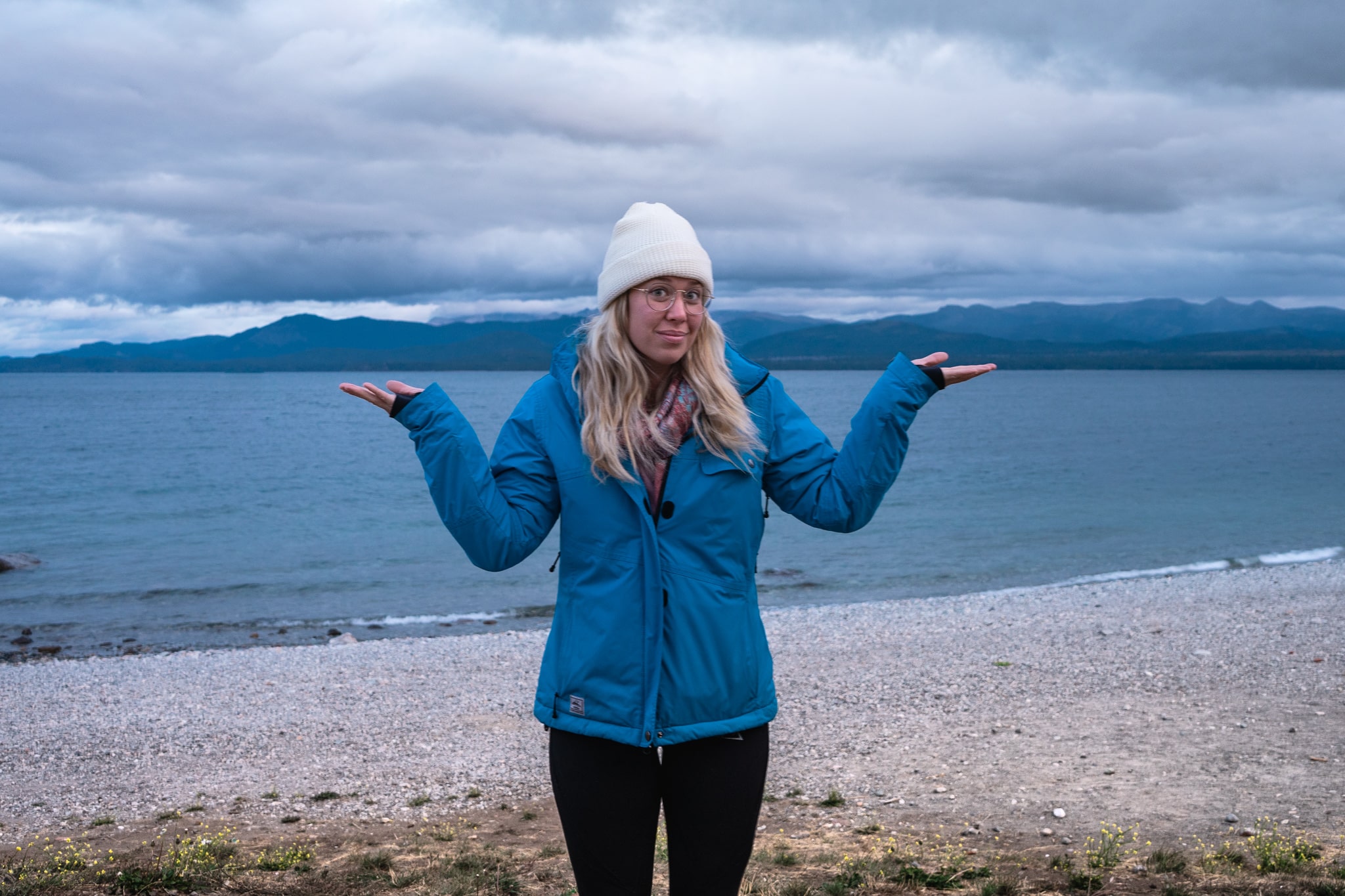
Well, water is the stuff of life. You need it.
And, when you are camping or traveling you just don’t know what’s in the water. Maybe you’re downstream from a factory, or a field runoff with pesticides, or a town that dumps their garbage in the water. Gross, I know. But sadly, this happens a lot. Even if you’re sticking to major cities, you may realize you don’t have access to clean drinking water. This was the case for me in Quito, Ecuador, all of Mexico, Cape Town, Africa and Barranquilla, Colombia.
Or, the city may have old or bad pipes. Or your gut bacteria may simply not be the avid world travelers that you are.
Hello, traveler’s diarrhea.
And let me tell you when you’re sleeping in the top bunk of a 16 person dorm room on the humid Caribbean coast of Colombia after a four-day Lost City trek through the jungle without clean water AND the electricity goes out, the last thing you want is to test your parkour skills while running back and forth to the communal bathroom all day and night.
But there are other things too: E.Coli, Hepatitis, Giardia, Cholera, and a mess of other illnesses. In fact, waterborne illnesses are the number one reason travelers get sick! Your travel vaccinations will only get you so far here.
Taking those hiking boots into remote areas (towns or backcountry) or developing countries? There’s no double you need to get yourself a water purification system.
Common waterborne illnesses travelers get
When you’re shopping online, the difference between a travel water filter and a travel water purifier can be as clear as mud.
Before we get to the differences between a water filter and a water purifier, let’s talk about the things that contaminate water and how they make you sick. I already mentioned a few. But I’ll classify them for you.
The majority of waterborne illnesses are caused by pathogens that cannot be seen by the naked eye. They usually enter the water from human or animal contamination. And FYI – I’m considering chemical contamination as human contamination, because, well, it is. Anyway, there is an infamous trio of pathogens that infect waters in various parts of the world.
They are listed by size (large to small) below:
- Protozoa/Cysts → examples include Giardia lamblia and cryptosporidium
- Bacteria → examples of this include salmonella and E. Coli
- Viruses → examples of this include Hepatitis A and Norovirus
Now that we are aware of the trio of waterborne illnesses that are floating about waiting to infect us, let’s talk about the use of water filters and purifiers and how they prevent us from getting sick.
Step 1: Buy a travel water bottle to carry with you
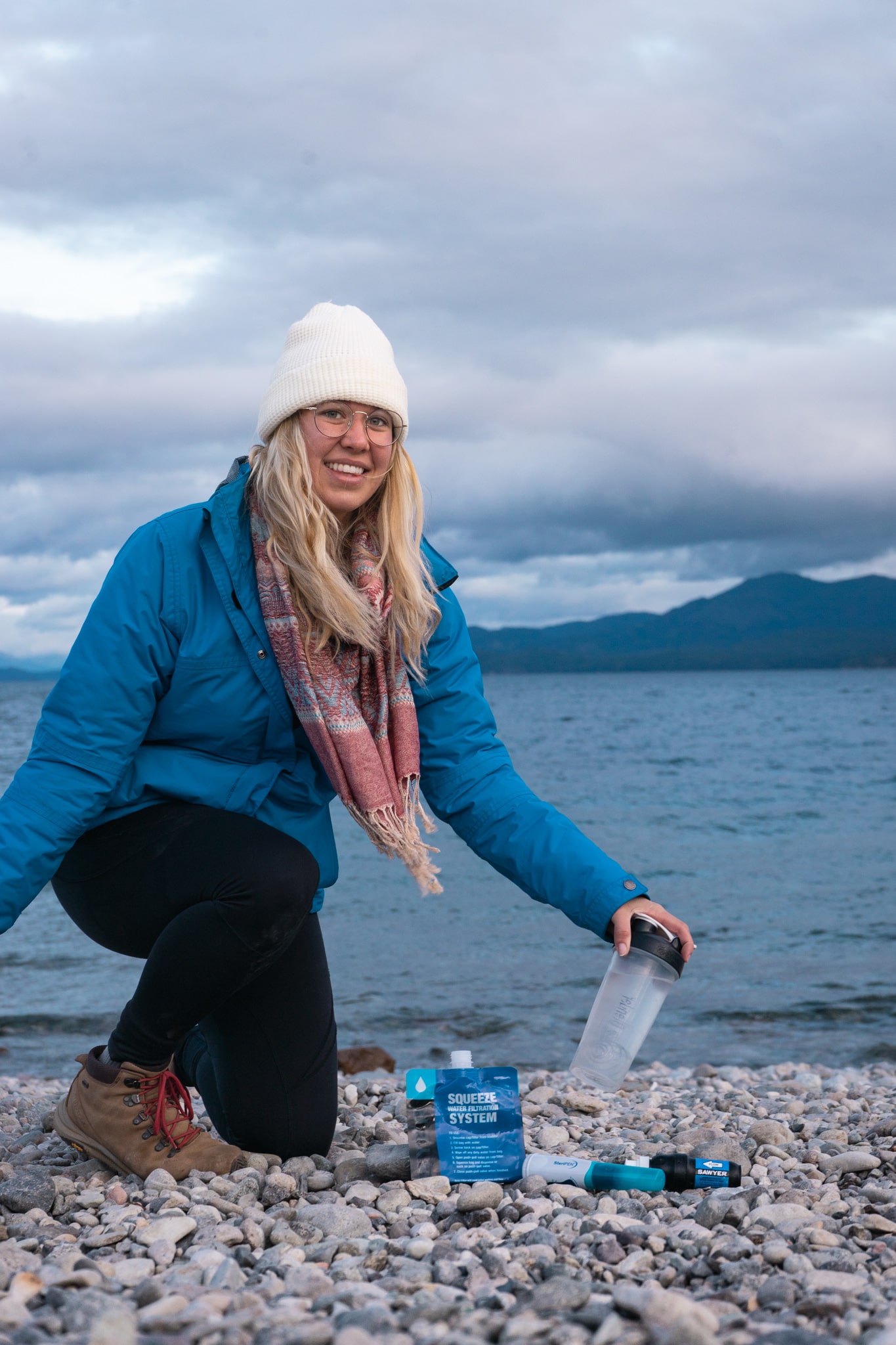
Whether camping or backpacking on summer vacation, your gear and/or pack list should include, at a minimum, two major components:
a). a water bottle, and
b). a water filter or water purifier.
Sure, you can pledge to only buy bottled water. A lot of people do that. But buying all of your water in plastic bottles is not only bad for the environment, but it will put a pretty large notch in your budget.
Instead, you should get yourself a reliable water bottle. I have a 24 oz Blender Bottle and it has not left my side for the last 10 months. Except for when I forget it somewhere. But I always go back for it, because I can use both my travel water filter and my travel water purifier with it. I can track how much water I drink every day with the lines on the side. I’m reducing my plastic use. And the little shaker thing in it lets me whip up a protein shake on the go when I’ve been eating nothing but pan de queso and rice for three days. It’s honestly one of the things that has helped me stay healthy while traveling – in more ways than one – but that’s a story for another day.
Here are a few other great water bottles you can use:
Nalgene Wide Mouth 32oz Water Bottle
Clear, big, and fuss-free. What more do you need?
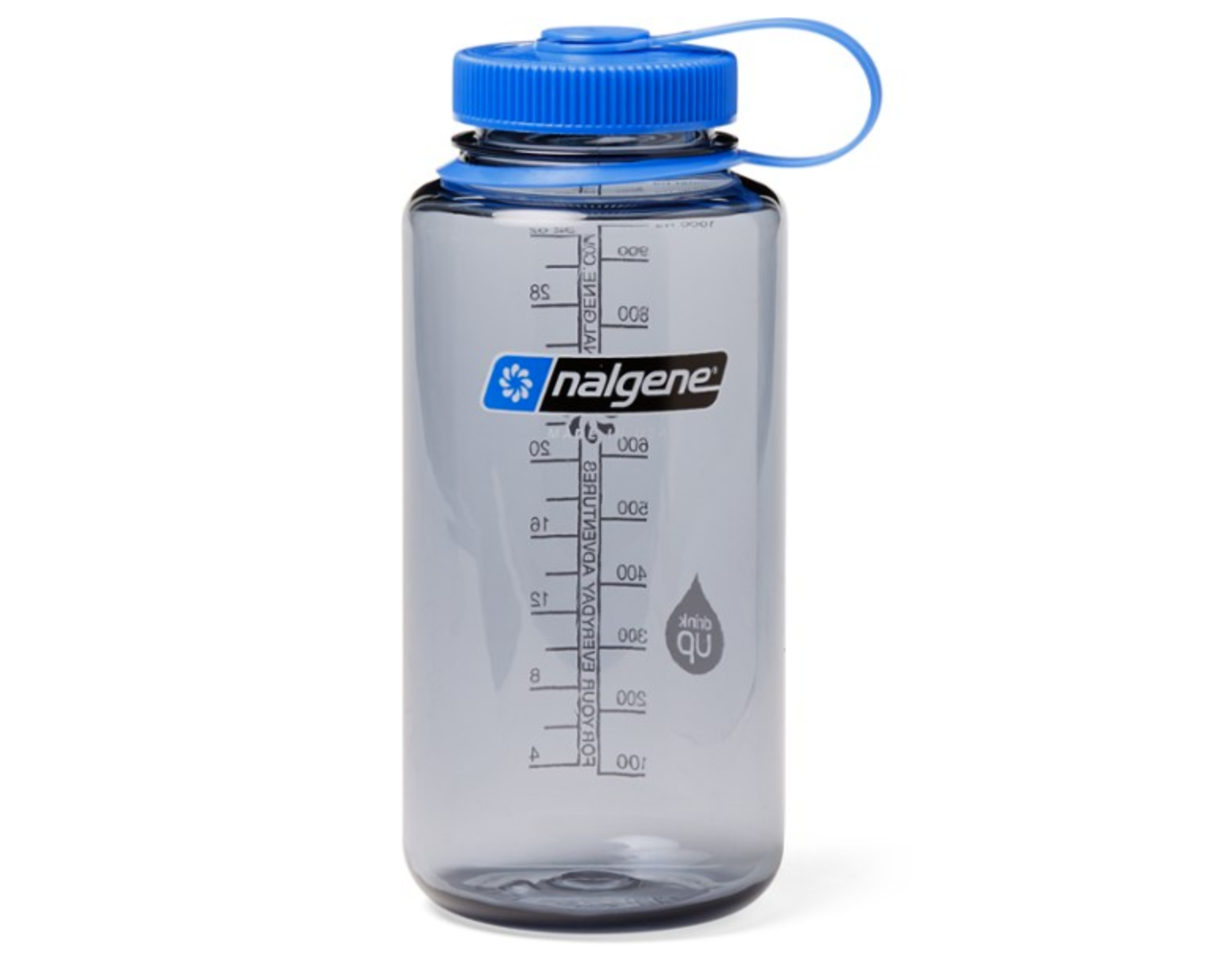
Hydro Flask 21oz Standard Mouth Water Bottle
Great as an all-around travel water bottle because it works for hot or cold drinks. But you’ll want to purify your water before you put it in here.

YETI Rambler 26oz Bottle
Similar to the Hydro Flask, but a bit bigger. Great if you want to clip it onto a backpack and know you have plenty of water. Not great as a travel water bottle when you want something more compact.
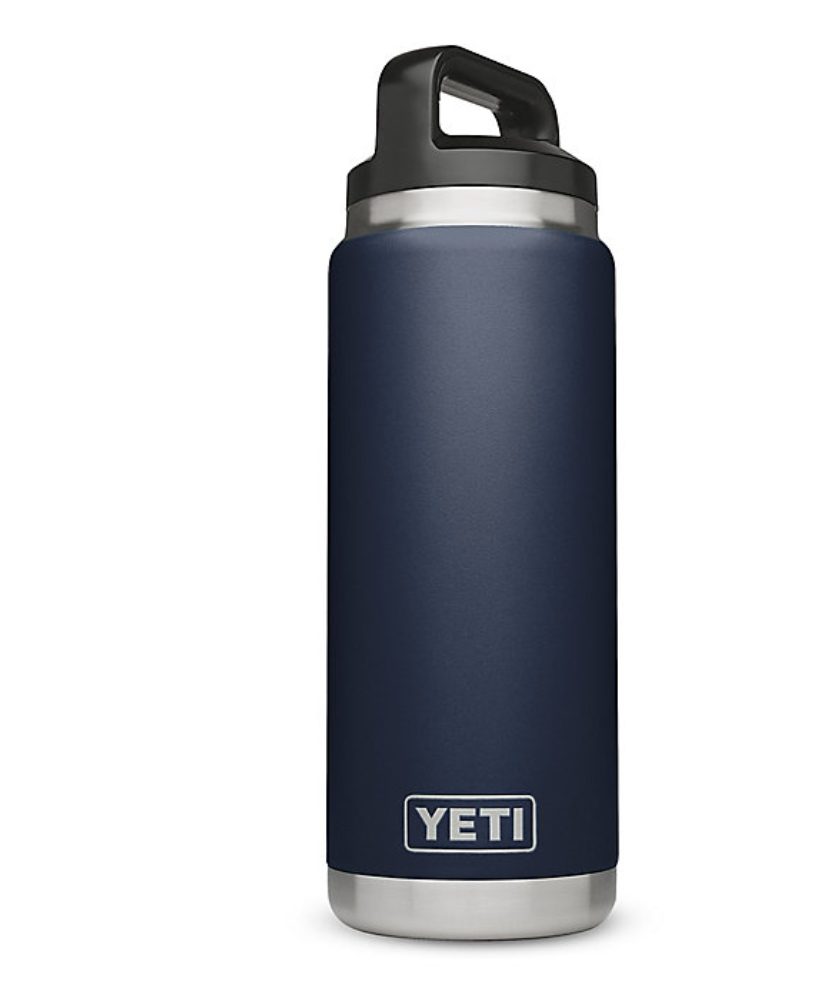
Co-Op Cycles Purist 26oz Water Bottle
If you’re backpacking or bicycle touring, something that fits into a water bottle cage, backpack pocket and/or can be used on the go is a must. This is a no-frills, budget-friendly travel water bottle.
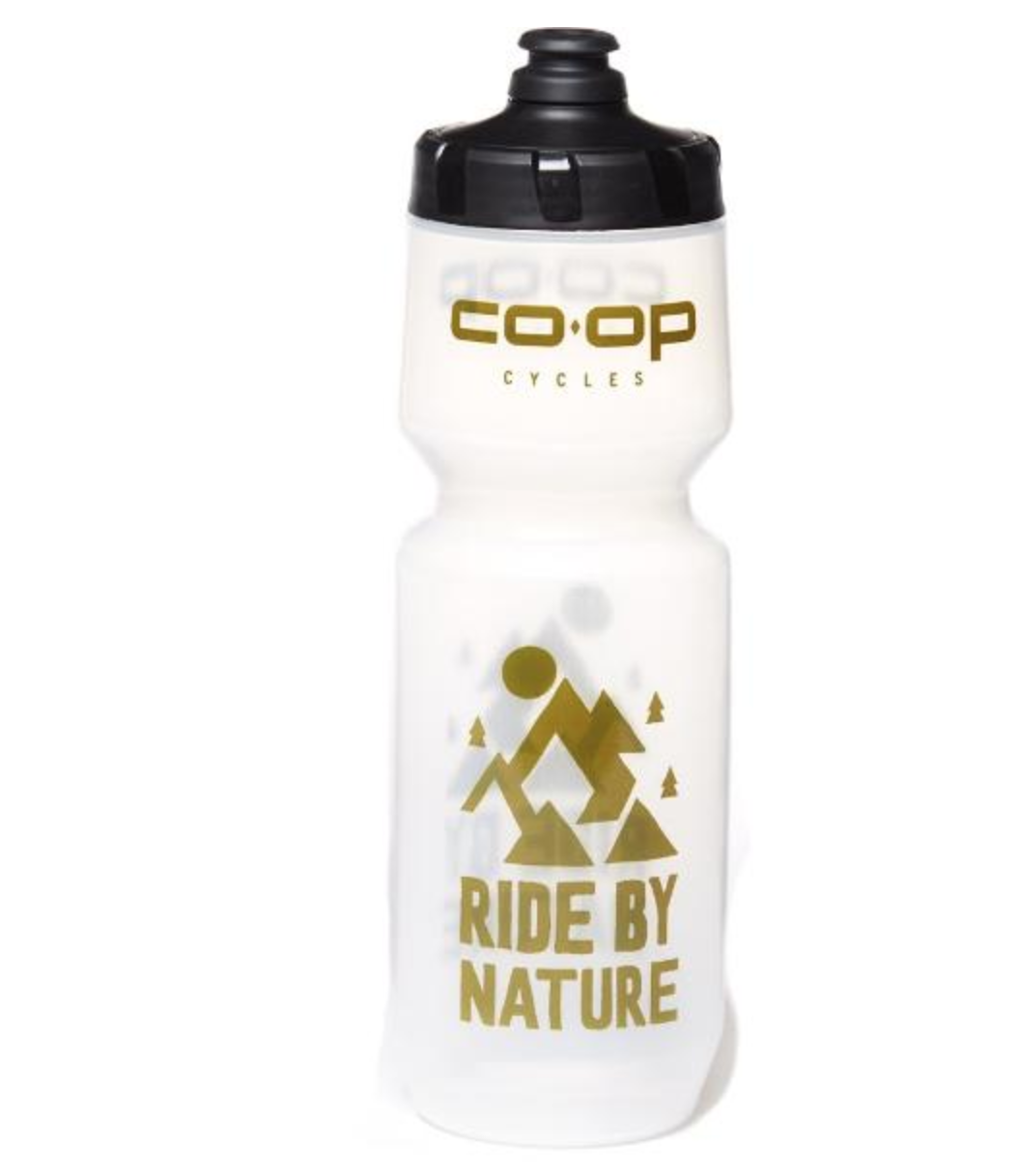
Your best bet is to invest in a water bottle and a travel water filter and/or water purifying system that you can count on no matter where you are in the world. Finding safe water to drink in the backcountry is one thing. But you’d be surprised to learn that, sometimes, the most dangerous water is in your hotel room when you are on a layover in between adventures.
Step 2: Know when to use a water filter vs. a water purifier
Here are the cheat-sheet basic distinctions between a water filter vs. a water purifier:
Water Filter → removes protozoa and bacteria in contaminated water
Water Purifier → removes protozoa, bacteria, AND viruses in contaminated water
As I mentioned above, a water filter acts more like a strainer to clean the water from large particles. It usually uses some sort of force to push the water through a filter with teeny tiny holes and make it safe to drink. It’s great to use on your camping trips when you know you’ll be near a clean water source – like a spring, running creek or remote glacial lake.
A travel water purifier will most often use chemicals or UV light pulses to clean the water in question, keeping you safe from the unseen dangers that may be lurking. This is great when you’re traveling in a foreign country, remote towns or camping/hiking in an area where you only have still water to drink from (lakes, for example).
And a combo of the two is great when the water is both visibly dirty and you question what sort of contamination it might have. Like, for example, a freshwater river or dirty tap water.
It may be important to note here that both water filters and water purifiers are meant to be used on freshwater sources. It won’t let you turn the ocean or any other body of saltwater into your own personal drinking fountain. That’s a whole different process.
Different types of travel water filters
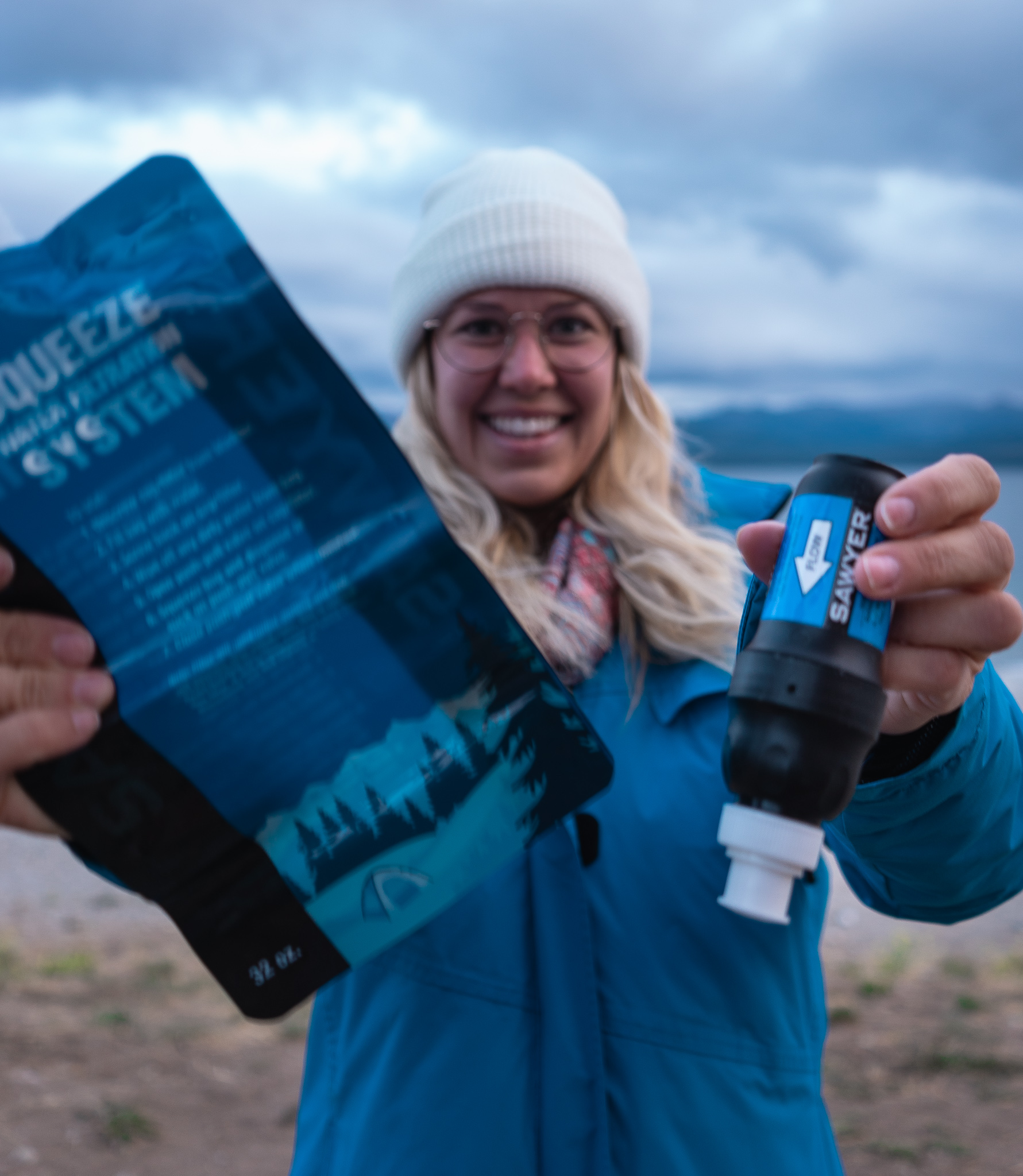
Before we jump to travel water purifiers, let’s talk about the different types of filters on the market today. There are a number of different options that are all great in their own special snowflake way.
Not all filters will be perfect for you. When shopping, consider how often you will need to use it, how much you’re willing to spend, the functionality, filter capacity, and – if you are backpacking – how lightweight it is. I don’t use a travel water filter all that often. So, being compact and lightweight was most important.
Pump water filters
Pump filters generally rely on ceramic cartridge components, which are great at blocking the majority of contaminates, even asbestos. While it is removing contaminants, the beneficial minerals will not be removed from the water. The major downside is that, because the ceramic filters manually stop contamination through their pores, smaller bacteria can sneak through. You’ll also have to be sure to change the filter at least once a year.
Examples → The Katadyn Vario Water Filter or Survivor Filter Pro
Straw water filters
This will be the most lightweight of all the filter options. It will remove major things like protozoa, debris, and bacteria but it is not as effective at removing contaminants like chlorine, heavy metals, and pharmaceuticals. Because you hold the straw up to the water and very little water gets filtered at once, most people pack these as more of an emergency item rather than an everyday use item.
Example → LifeStraw is definitely the most well-known of these
Gravity water filters
This will be a longer-lasting filter system that is super effective, but only if stored properly. The different parts of the system can contaminate one another if not used or stored in the correct manner. It also tends to be a bit bulkier than other travel filters so it isn’t favored with lightweight backpackers. But, it is one of the best at removing herbicides and pesticides that runoff into backcountry water sources. These are also great if you are looking to filter a larger volume of water.
Examples → The Platypus Gravity Works or the Katadyn Gravity Camp Water Filter
Bottle water filters
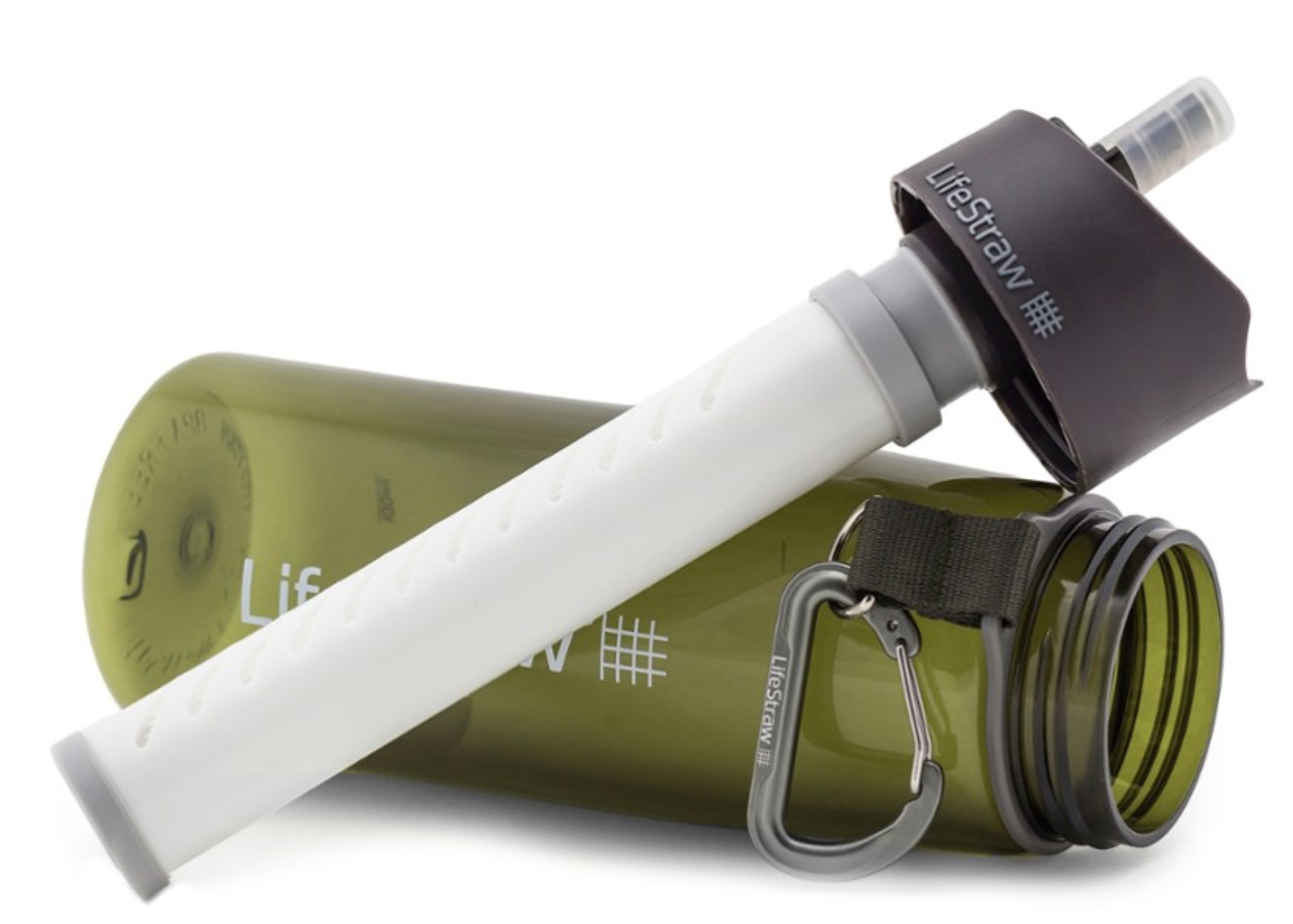 One of the easiest to use because you can just fill up your bottle or pouch, attach the filter, and drink as if it were from a normal water bottle. Some water bottles are small gravity filters and make you push the top part of the water bottle down to filter the water. They are very effective at removing major debris, protozoa, and bacteria while allowing beneficial minerals to remain. But they won’t filter out dissolved salts like fluoride and nitrates.
One of the easiest to use because you can just fill up your bottle or pouch, attach the filter, and drink as if it were from a normal water bottle. Some water bottles are small gravity filters and make you push the top part of the water bottle down to filter the water. They are very effective at removing major debris, protozoa, and bacteria while allowing beneficial minerals to remain. But they won’t filter out dissolved salts like fluoride and nitrates.
Example → The Platypus MetaBottle Filter or the Katadyn BeFree Collapsible Water Filter Bottle or the LifeStraw Go Filter Bottle
The consensus on water filters is that they are generally used more often than water purifiers for adventure travelers, campers and hikers. This is largely due to the fact that they can make the water taste better.
In most backcountry situations, you can get by with only a filter, but there may be some scenarios when a purifier is preferred.
The pros and cons of a travel water filter
Water filters have a lot of great applications. I carry a Sawyer MINI Filter and I really love it. It takes up almost no space and I know it’s the perfect thing to refill my water bottle when I cross a spring.
But there are other times when a travel water filter just won’t cut it.
| Water Filter PROS | Water Filter CONS |
|
|
Overall, a water filter will do the trick but only if there aren’t a lot of people around. This can also mean when you’re in a remote village, but you need to be careful. Most of the viruses that will make us sick are carried through human waste or livestock waste. Even small, remote villages have humans and livestock in them. And it can sometimes be impossible to know what is happening upstream from you.
Be observant if you are visiting or passing through a small, remote village. Are they washing clothes or bathing in the stream? Do they dispose of trash in the river? Can cows and goats access the water sources? All of these care contributors to harmful bacteria as well as viruses in the water.
One quick tip: carry your travel water filter of choice, some chemical water purifying tablets and electrolyte tablets. The water filter will clear out debris, the (optional) tablets will purify the sketchy water situation and the electrolytes (which I always use) really help mask the taste of lake water AND do double duty by giving you some nutrients. Nuun has berry flavored, lemon-lime flavored and other options with caffeine, electrolytes for hydration and more!
Different types of travel water purifiers (+ my favorite one!)
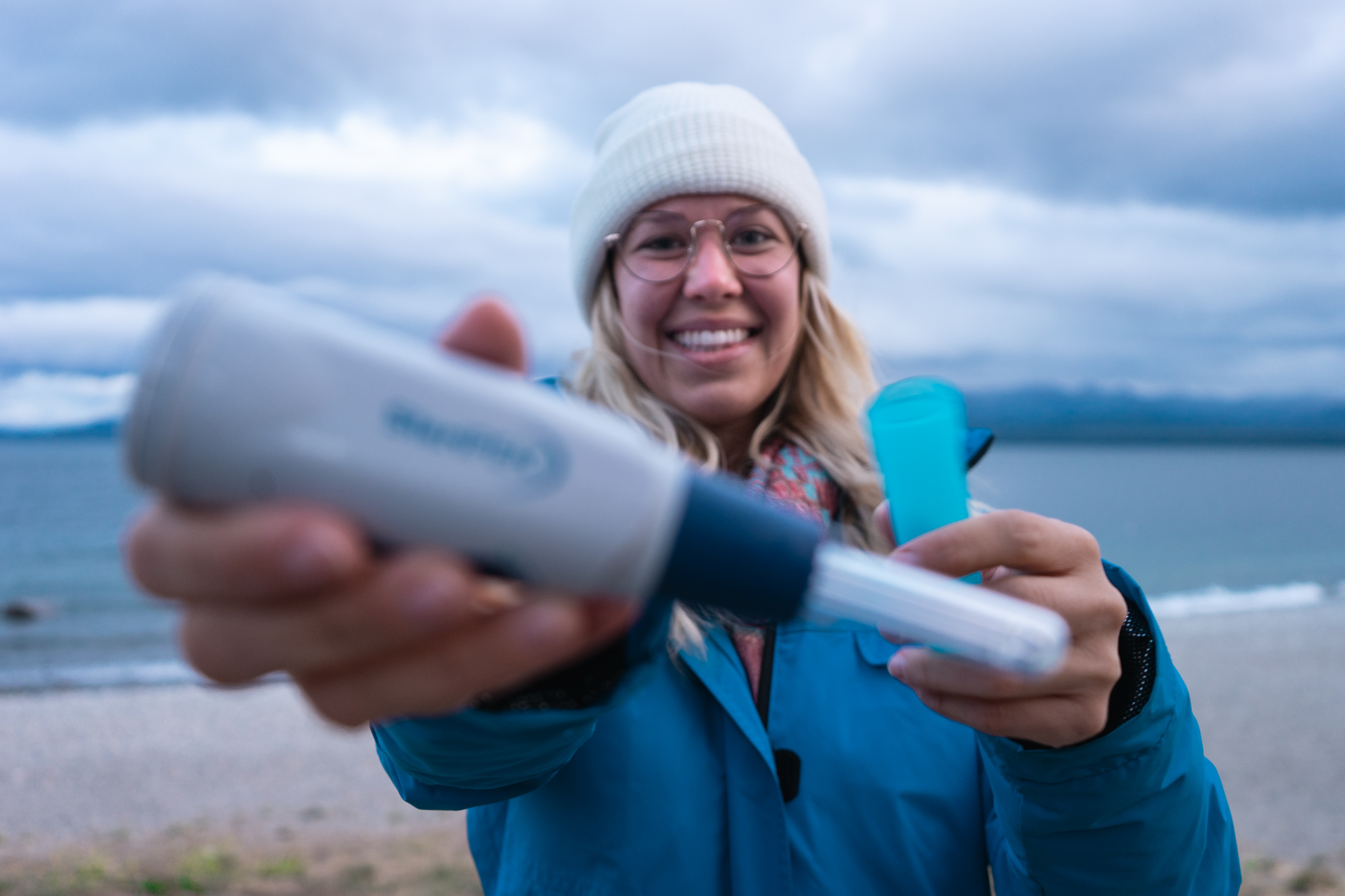
I like to think of crossing the line between filter and purifier the moment you step into the city limits. But really, it’s before. If you’re in remote towns or developing cities, get yourself a purifier. As explained earlier, if there are telltale signs (or even just the slightest suspicion) of human or animal contamination in your water source, purify!
The largest distinction between water filters and water purifiers is that water filters work to physically strain out microscopic pathogens while purifiers eliminate the viruses that are simply too small for filters to catch – usually with chemicals or UV light.
As with the different types of water filters, each type of travel water purifier has its pros and cons.
Pump water purifiers

Examples → The MSR MiniWorks EX System or the MSR Guardian Purifier show you the different sizes (and price points) available
UV light water purifiers
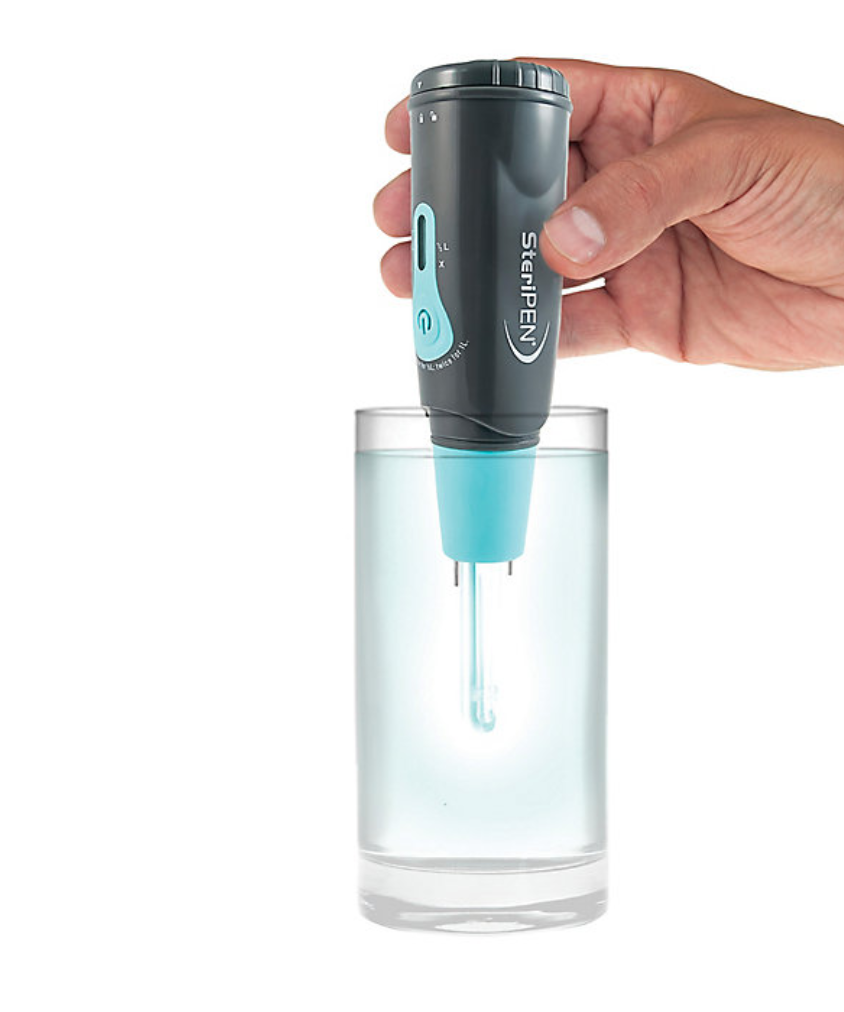 Maybe the coolest of all of the purifying systems (in my opinion), is this UV light is on the end of a wand. You stick the wand in the water bottle for a brief period of time and, voila! The UV rays neutralize protozoa, cysts, bacteria, and viruses. No pumping or chemicals. One disadvantage to the UV system is that if the water is silty or murky, it will be unable to penetrate beyond the silt, making it completely ineffective. There are specific models that overcome that problem. But, in general, if you have a UV purifier, the water needs to be as clear as possible – and the container clear as well – for the best results in killing contaminates.
Maybe the coolest of all of the purifying systems (in my opinion), is this UV light is on the end of a wand. You stick the wand in the water bottle for a brief period of time and, voila! The UV rays neutralize protozoa, cysts, bacteria, and viruses. No pumping or chemicals. One disadvantage to the UV system is that if the water is silty or murky, it will be unable to penetrate beyond the silt, making it completely ineffective. There are specific models that overcome that problem. But, in general, if you have a UV purifier, the water needs to be as clear as possible – and the container clear as well – for the best results in killing contaminates.
Example → The SteriPEN Aqua UV Water Purifier is just one model in one of the most recognized names in the outdoor industry.
Water bottle purifiers
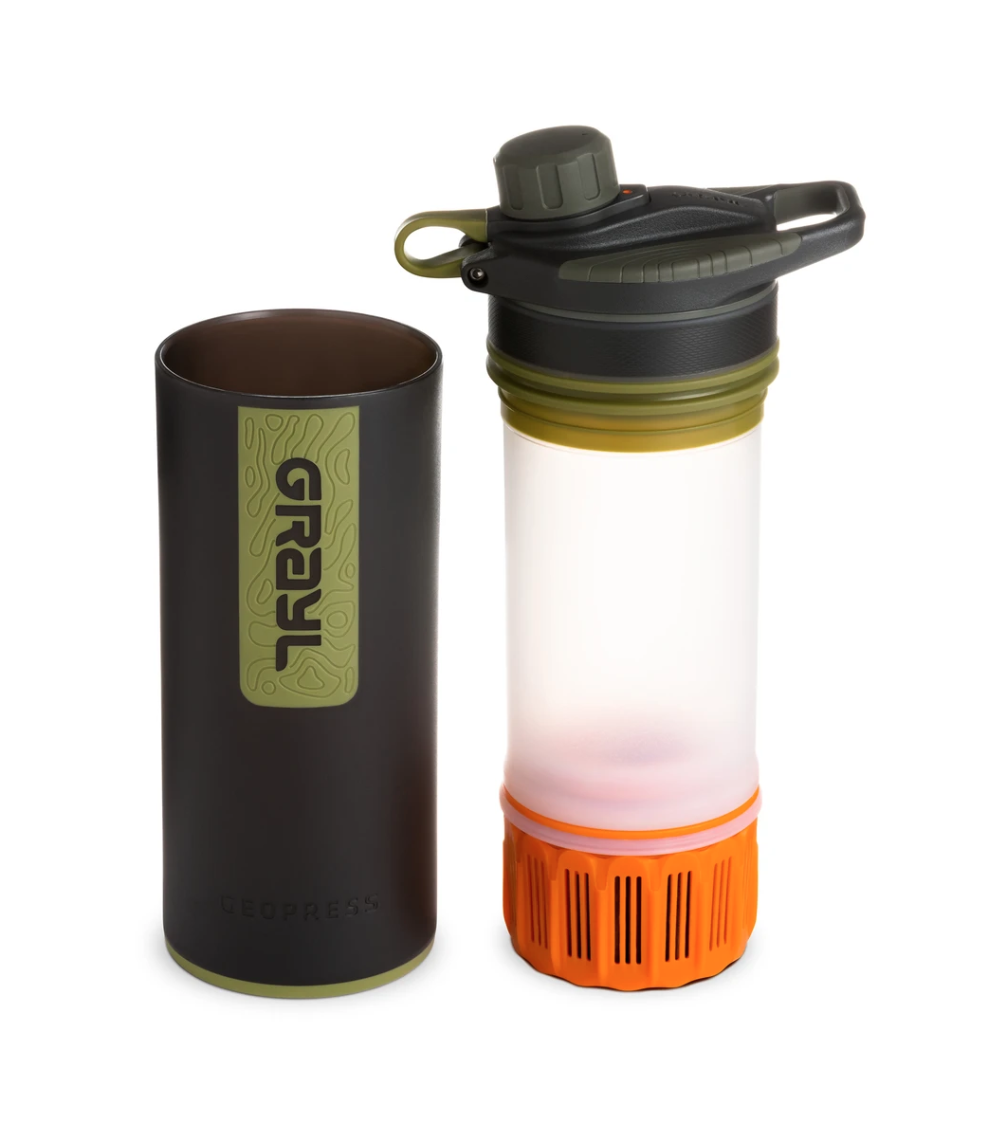 These are also quite travel-friendly and essentially combines filtration and purification into one convenient bottle. The bottle’s internal cartridge is what captures all of the contaminates. You fill your bottle, plunge in the cartridge, and then you can drink clean water out of the upper portion of the bottle. Very similar to the water filter bottles, with the added purifying component. Just make sure you have what you need in order to eliminate the viruses!
These are also quite travel-friendly and essentially combines filtration and purification into one convenient bottle. The bottle’s internal cartridge is what captures all of the contaminates. You fill your bottle, plunge in the cartridge, and then you can drink clean water out of the upper portion of the bottle. Very similar to the water filter bottles, with the added purifying component. Just make sure you have what you need in order to eliminate the viruses!
Examples → The Grayl Geopress or Mizu Adventure Kit Vacuum
Chemical tablets

Examples → Aquamira chlorine tablets, Potable Aqua, or Katadyn Micropur tablets
The pros and cons of a travel water purifier
Generally speaking, I think it’s better to have a water purifier than a filter in my pack. But I do a healthy mix of city and remote traveling. And that doesn’t mean there aren’t things you need to watch out for with a water purifier.
| Water Purifier PROS | Water Purifier CONS |
|
|
By now, you should be able to paraphrase the difference between a water filter and purifier. Hopefully, you even know which one you need for your upcoming trip (if you don’t, just leave a comment or email me!).
Deciding which type of water system you need is just the first step. You then need to decide between which type of filter or purifier you want. Then, there are often multiple brands and models of each type to consider.
My recommendation: The SteriPEN
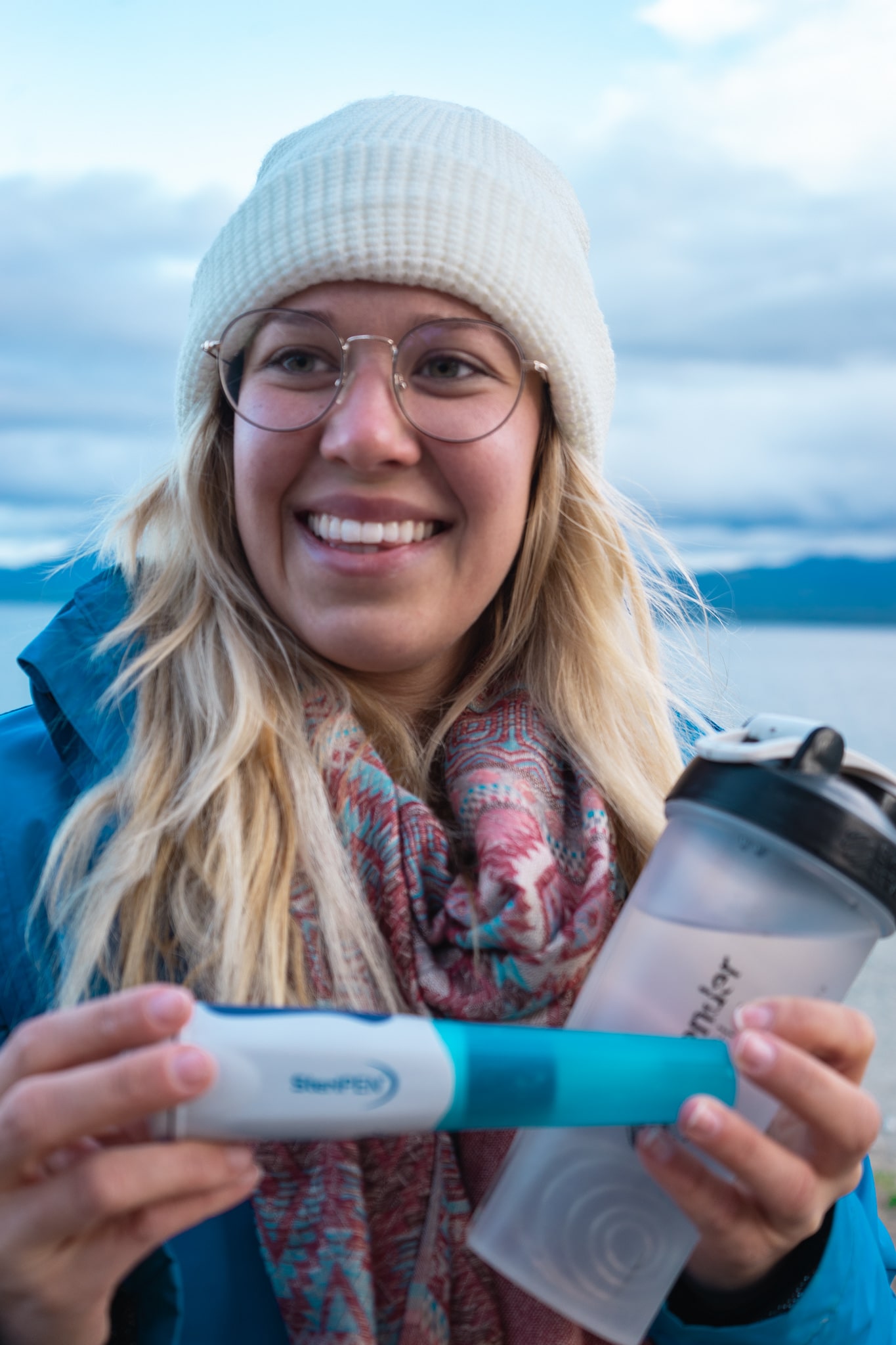
SteriPEN – a water purifier made by Katadyn – offers what feels like 100 different options. They are all UV light water purifiers and will all likely work great, but they each have their own special twist. Since SteriPEN is my ride-or-die purifier of choice – and since I spent what equates to a week of full-time work perusing forums and standing pensively in the water aisle of REI – I’ll share my findings on the top five here.
- The SteriPEN Classic 3: My boo and, as the name suggests, the classic model. The award-winning classic model, that is. Version 3 means they had plenty of time to work out any kinks and now purifies up to 150L with just four lithium batteries. The device is water-tight, in case you’re a vigorous stir-er, it uses simple red and green lights to let you know it worked and the bundle pack comes with a pre-filter, giving you the best of water filters and water purifiers in one compact system.
- SteriPEN Ultra UV: Is the flagship model. The OG water purifier that’s lightweight and ready for day after day use. It’s simple and straightforward: good for 8,000 applications and USB rechargeable.
- SteriPEN Adventurer Opti: This SteriPEN model has some new technology built into it. There’s an optical eye sensor in the want that can double as an LED flashlight at camp. Not only that but there’s an insulating sleeve that allows for very cold water to be purified and it’s the only water purifier on this list that treats both clear and cloudy water. Perfect for an alpine adventure.
- SteriPEN UltraLight: This is the smallest purifier in the line-up and truly is a super-compact design. It has a USB-only rechargeable battery, treats water up to 8000 times, and only weighs 76.5 grams. Lightweight backpackers, revoice.
- SteriPEN American Red Cross UV purifier: Great for an emergency kit and used around the world. It can be charged via USB from the wall or a solar panel, purifies up to 20 L of water on a single charge and will beep to notify you when there are only 100 applications left.
Ready for the ultimate combo?
Any of the above with the SteriPen Pre-Filter. The Classic 3 already comes with it, but you can buy it separately. You pop it onto your water bottle and then squeeze through the water, removing any cloudiness, silt, and other floaties before you purify with the UV light.
So, that’s that.
As you can see, it’s a lot. If you’re like me, you got decision fatigue eight paragraphs ago. But don’t worry! You’ll be really proud of yourself that you navigated through a difficult part of getting your backcountry gear list dialed in. You’re taking the leap from smaller, day or weekend trips where it’s feasible to carry all your water, to larger, multi-day treks where you have to source water as you go!
It’s also worth mentioning that these options range from the utilitarian and budget-friendly (tablets or water bottles) to the downright luxurious. And I know most travelers have a budget.
But this isn’t an optional piece of gear – you need to drink water!
From my experience, it’s way better to pay for quality equipment – especially when it’s potentially life-saving. Need to save money? Think about taking a red-eye flight, opting for a sleeping bag that’s synthetic instead of down, or cutting back on the items of new clothing you are buying rather than skimping on a water purification system. If you get sick, you’ll be paying double in medical bills and/or lost time during vacation!
Fortunately, more expensive doesn’t necessarily equal better or cleaner water. Often, it comes down to the quantity and speed at which the system works. The most important thing is that you buy a purifier from a trusted brand – ideally with a warranty and plenty of reviews.
Finally, if you don’t have a purifier but think the water could be contaminated, don’t settle for a filter! Use your camp stove or a hostel kitchen to boil the water at 158°F (70°C). “Boiling” means it’s bubbling or “rolling.” Do this for a minimum of 1 minute. I usually do 2-5, just to be sure. Then, add tea, coffee or put it in your water bottle and pop it into the freezer/fridge for a quick cool down before drinking.
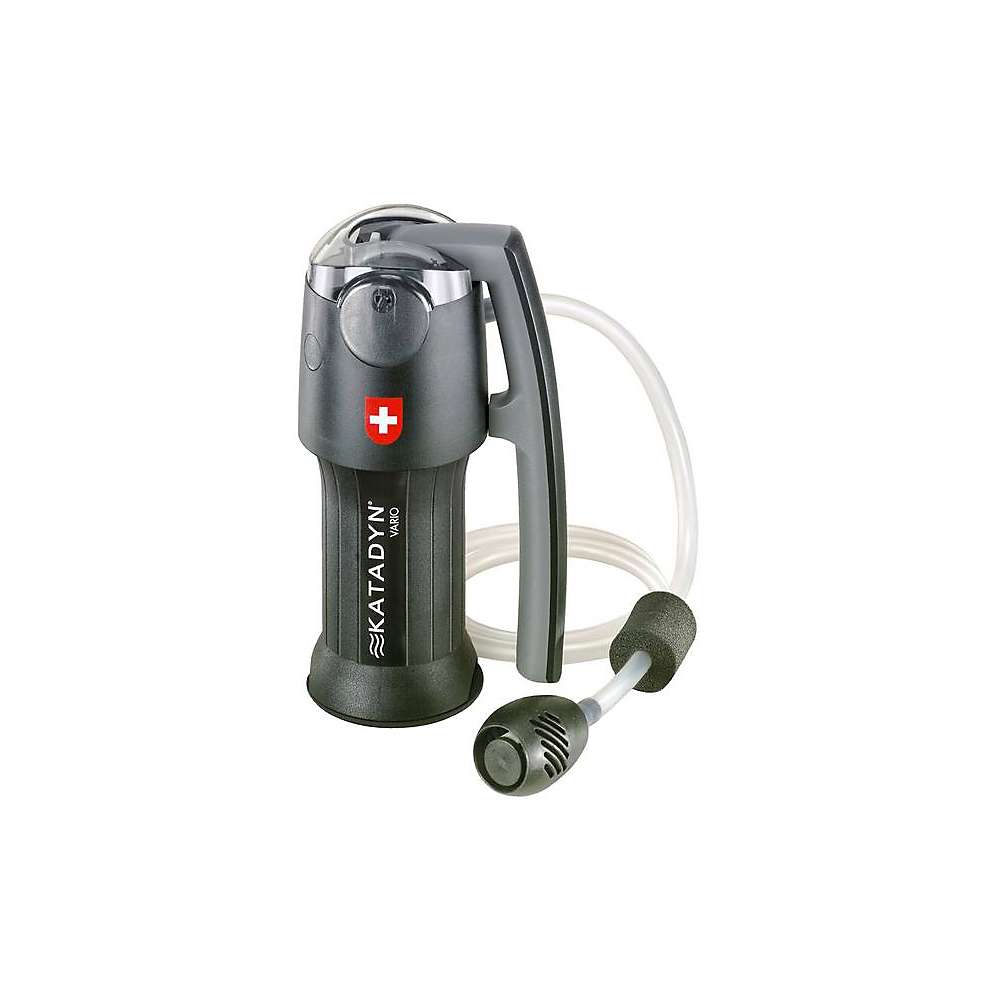

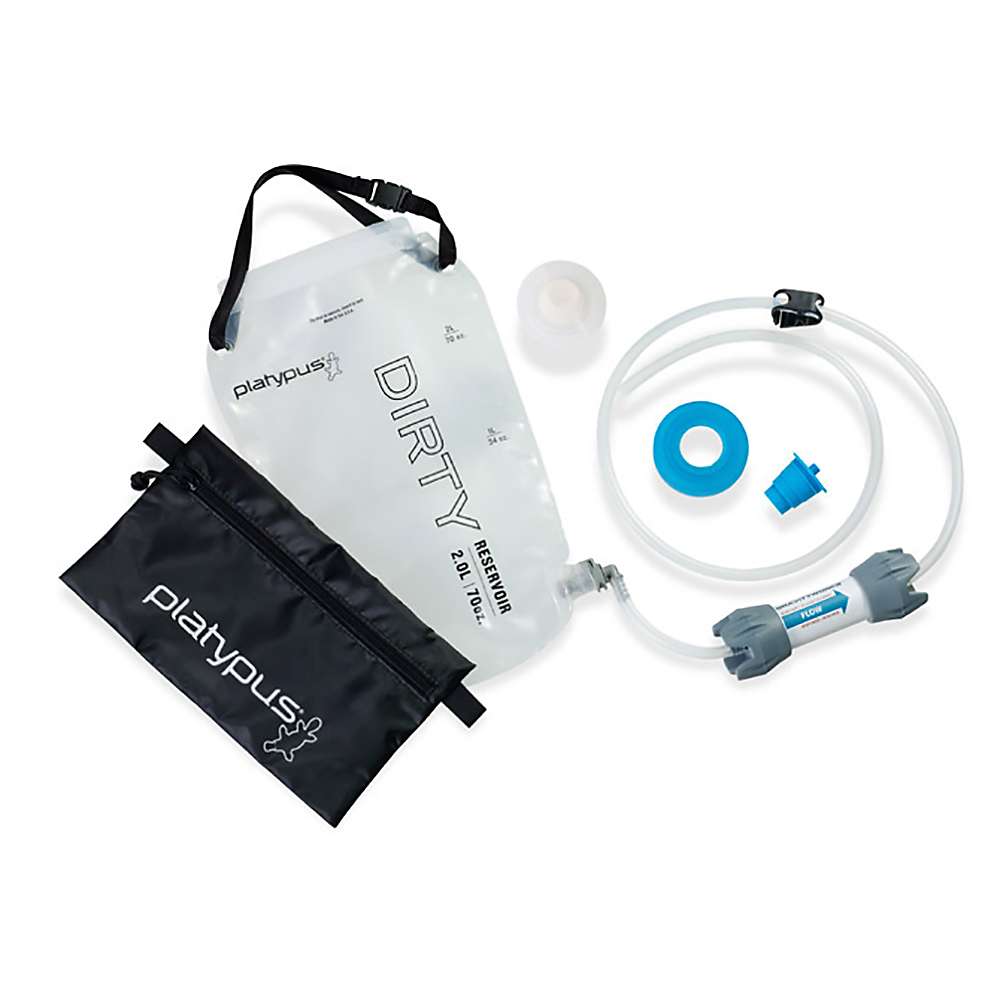
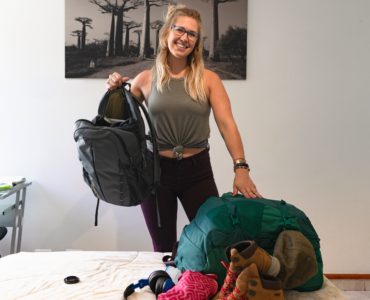
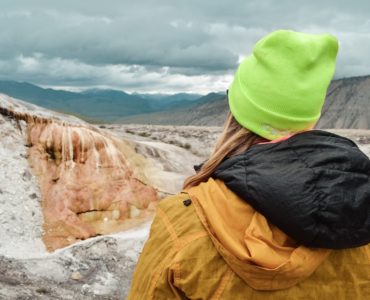
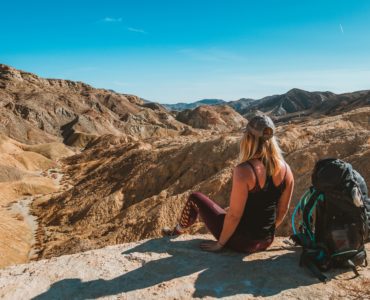

Sharing is caring. Thanks for sharing this with the community. We must filter water before drinking it. I agree. It also true that earlier we found a different taste of water after filtration. That’s for the materials contained in the water. Now most of the water purifiers provide the same taste water through RO water purifier as well. Drink safe, live safe.
Thank you for reading and sharing your input!